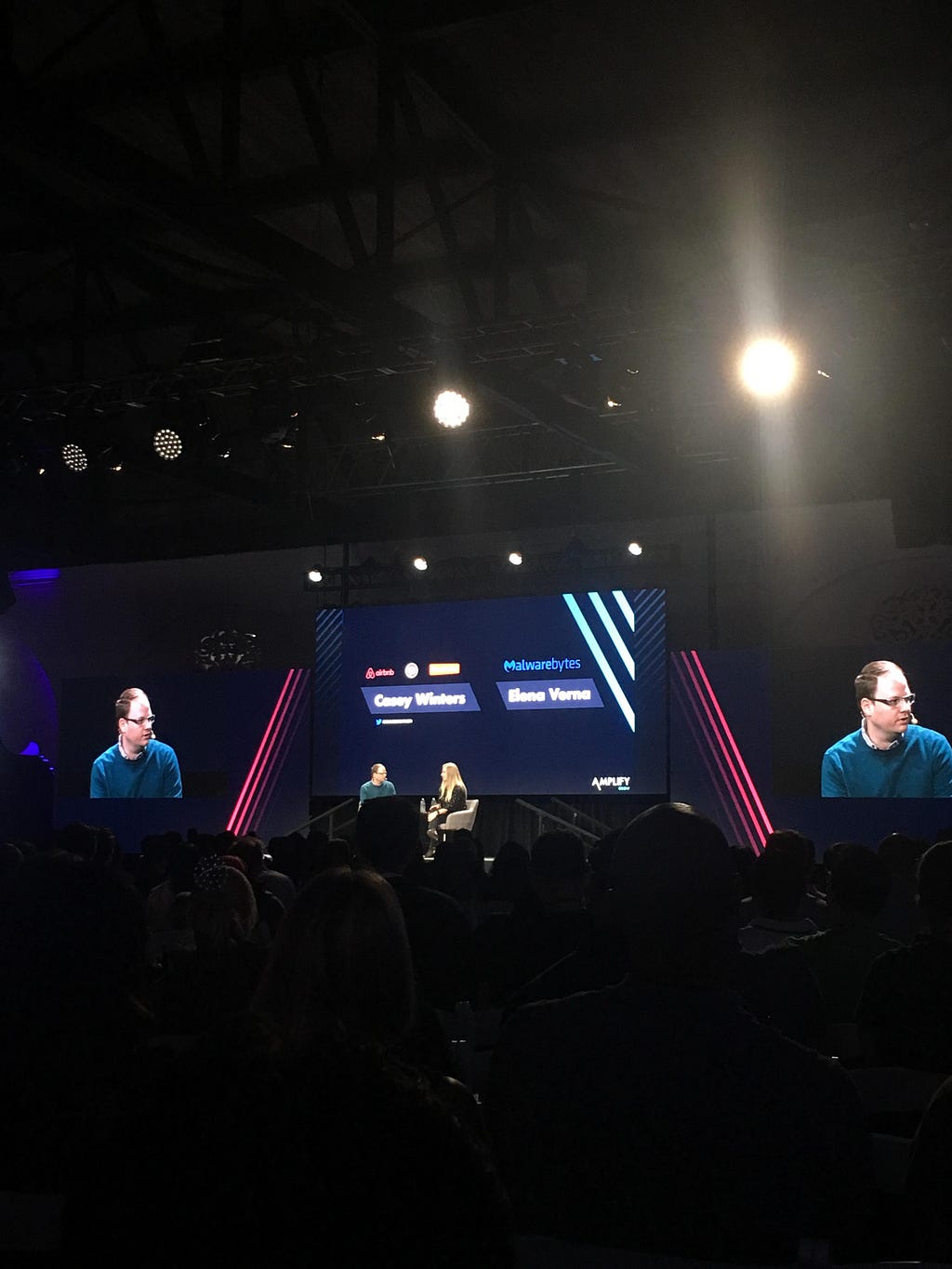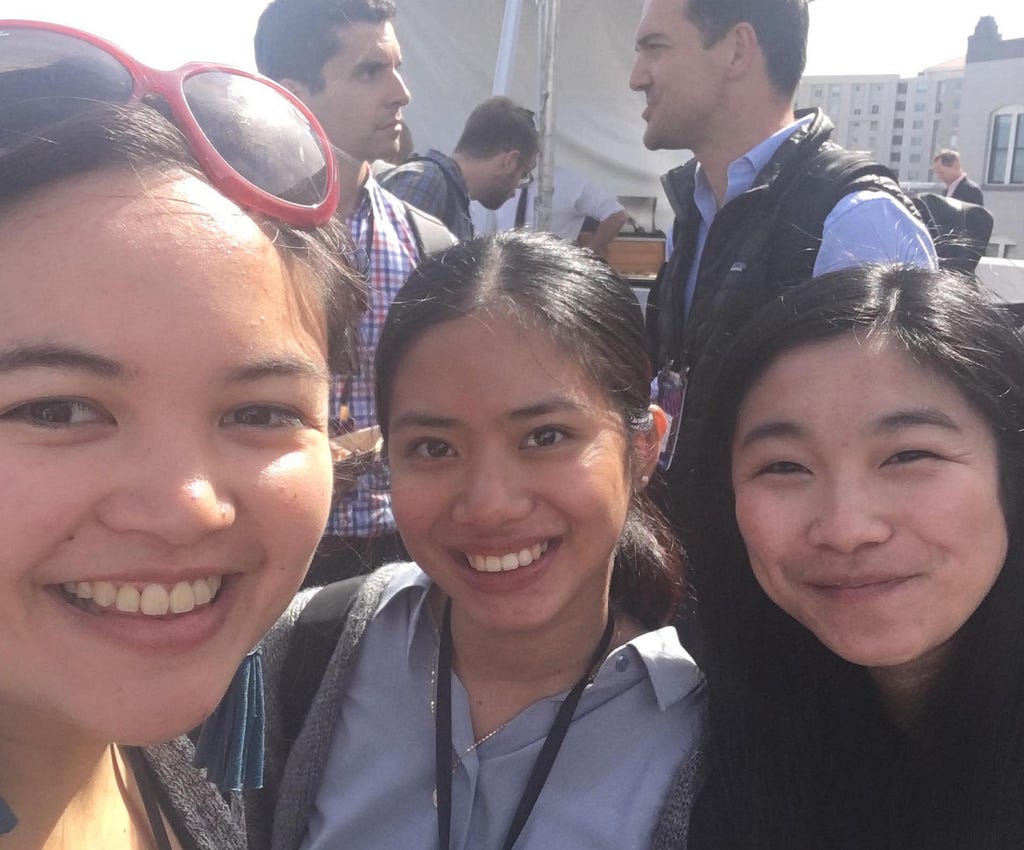Latest news about Bitcoin and all cryptocurrencies. Your daily crypto news habit.
 Amplitude talking about their growth engine product
Amplitude talking about their growth engine product
I received a pass to Amplify because of the generosity of the Advancing Women in Product (AWIP) community — AWIP is a organization whose goal is to empower the next generation of women product leaders.
So there I was on the morning of October 9th, nibbling on my mini breakfast croissant, bumping against the shoulders of product leaders, anticipating the start of a jam-packed, learning-rich, & Ritual Roasters coffee-filled day.
If I think about the learnings I drew out of the conference, I’d say they weren’t necessarily profound nuggets of wisdom — they’re more like gentle reminders. Things I already know but tend to forget when building products.
Here’s what I learned:
Growth is more than a funnel. It’s a lot of different loops.
I often break down products via the Pirate Funnel (Awareness, Acquisition, Activation, Retention, Revenue or AAARR for short). But Casey Winters, (VP Product at Eventbrite, formerly growth at Pinterest & Grubhub, among others), argues that that framework prioritizes feeding only into the top of the funnel. When in fact, our products are ongoing feedback mechanisms, aka Loops.
 Casey Winters interviewing Elena Verna
Casey Winters interviewing Elena Verna
Macro loops stitch our micro loops over time.
We have 3 general types of loops:
- Viral loops are when users organically share or are incentivized to refer other friends back to your product.
- Content loops are classified based on the type of content generated. These can be company (HubSpot, WebMD), user (Pinterest) or supply (Grubhub) generated.
- Paid loops vary based on who does the work to distribute the product. These can be ads, sales teams or integrations via partnerships.
These growth loops paint a better picture than a funnel, and when architected like this you’ll reap the best outcomes.
We can make a difference when we look at products from the lens of social science.
I love Dan Ariely (best-selling author of Predictably Irrational, behavioral economics professor at Duke University). I love behavioral economics. I love Dan Ariely’s talk on behavioral economics for products.
 Dan Ariely giving the keynote!
Dan Ariely giving the keynote!
Dan performed a research study in Kenya with the goal of finding ways to help Kenyans save money. He tried several tactics, with mediocre results: injecting friction to make it more difficult to take out money, sending guilt-filled reminders to save, and introducing loss aversion in saving. But the tactic that worked the best by far was so simple and effective: if they saved money that day then they could scratch that day off on a calendar using a coin. The coin method made them aware of their daily actions of saving, and also injected social accountability from their family members. A simple, yet effective change in habit that made the often invisible act of saving money, extremely visible everyday.
Another great talk on behavior was from Tatyana Mamut. Her talk offered tactical advice in dealing with bad Internet behavior such as malicious accounts and fake news. As a company scales, entire departments are dedicated to taking down these bad actors before they infect the rest of the user base.
These examples were simple yet powerful examples telling us, “hey, our users are humans, too.” We’ve got a lot to learn from a behavioral scientist’s lens.
Data’s important, but use it in context.
Quantitative data’s so hot these days. And why not? It gives great insights into WHAT our users are doing. But the WHY is also equally important — and we need to marry both quantitative and qualitative data.
When initially measuring the success of a product, qualitative data might weigh more heavily. Sarah Tavel from Bessemer ventures emphasizes drawing from our First Principles and front loading user research. Our empathy skills in asking the right questions & observing raw human behavior comes first, until we can really couple the user research with data at scale.
“Product managers are the owners of a unique definition of a problem worth solving.”
I love this definition of a PM from Eric Vishria (General Partner at Benchmark Capital). Let’s break that down.
This definition is great. We can read it and say “oh, yeah, of course.” But we forget to live its principle. We forget to take ownership when things don’t go as planned. We forget to clearly define our goals & problems for everyone else to act on. We forget we are not the solution creators but the conduit to unlock everyone else’s creative potentials. If we can remember this holistic definition, we become better product managers.
 Some friends from the conference
Some friends from the conference
The product leader can understand the systematic complexities of the products they build.
I like the analogy that the partners at Benchmark Capital highlighted: We should not lose the forest for the trees.
It’s easy to silo into that one northstar metric, or be hyperfocused in building out that one feature. But the best product leaders can look at the forest and the complexities of what they’re building. The PM needs to ask themself, Does it affect other product metrics? Will this negatively impact specific cultures? What are the ethical risks associated with this design change? PMs need to understand the wider, not often thought of implications of the products they put out into the world.
As a bonus, my 6th takeaway is that Ritual Coffee Roasters is the best. (I had one too many cups.)
Thank you, Advancing Women in Product for the opportunity to learn from all these amazing product minds. I’m already on the waitlist for next years Amplify conference. Congratulations to Amplitude for a successful conference!
Amplify Conference 2018 was originally published in Hacker Noon on Medium, where people are continuing the conversation by highlighting and responding to this story.
Disclaimer
The views and opinions expressed in this article are solely those of the authors and do not reflect the views of Bitcoin Insider. Every investment and trading move involves risk - this is especially true for cryptocurrencies given their volatility. We strongly advise our readers to conduct their own research when making a decision.
